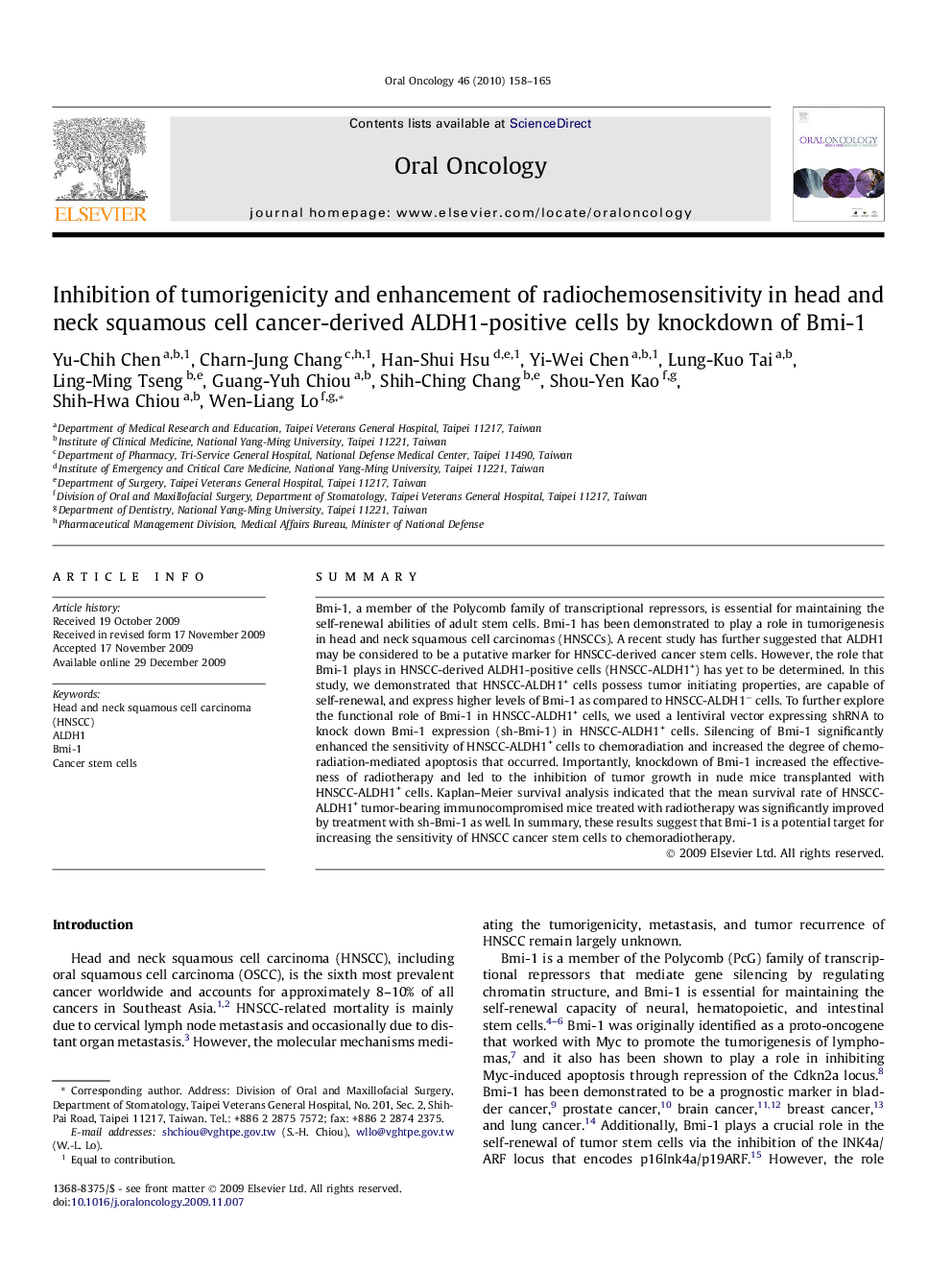| Article ID | Journal | Published Year | Pages | File Type |
|---|---|---|---|---|
| 3165216 | Oral Oncology | 2010 | 8 Pages |
SummaryBmi-1, a member of the Polycomb family of transcriptional repressors, is essential for maintaining the self-renewal abilities of adult stem cells. Bmi-1 has been demonstrated to play a role in tumorigenesis in head and neck squamous cell carcinomas (HNSCCs). A recent study has further suggested that ALDH1 may be considered to be a putative marker for HNSCC-derived cancer stem cells. However, the role that Bmi-1 plays in HNSCC-derived ALDH1-positive cells (HNSCC-ALDH1+) has yet to be determined. In this study, we demonstrated that HNSCC-ALDH1+ cells possess tumor initiating properties, are capable of self-renewal, and express higher levels of Bmi-1 as compared to HNSCC-ALDH1− cells. To further explore the functional role of Bmi-1 in HNSCC-ALDH1+ cells, we used a lentiviral vector expressing shRNA to knock down Bmi-1 expression (sh-Bmi-1) in HNSCC-ALDH1+ cells. Silencing of Bmi-1 significantly enhanced the sensitivity of HNSCC-ALDH1+ cells to chemoradiation and increased the degree of chemoradiation-mediated apoptosis that occurred. Importantly, knockdown of Bmi-1 increased the effectiveness of radiotherapy and led to the inhibition of tumor growth in nude mice transplanted with HNSCC-ALDH1+ cells. Kaplan–Meier survival analysis indicated that the mean survival rate of HNSCC-ALDH1+ tumor-bearing immunocompromised mice treated with radiotherapy was significantly improved by treatment with sh-Bmi-1 as well. In summary, these results suggest that Bmi-1 is a potential target for increasing the sensitivity of HNSCC cancer stem cells to chemoradiotherapy.
